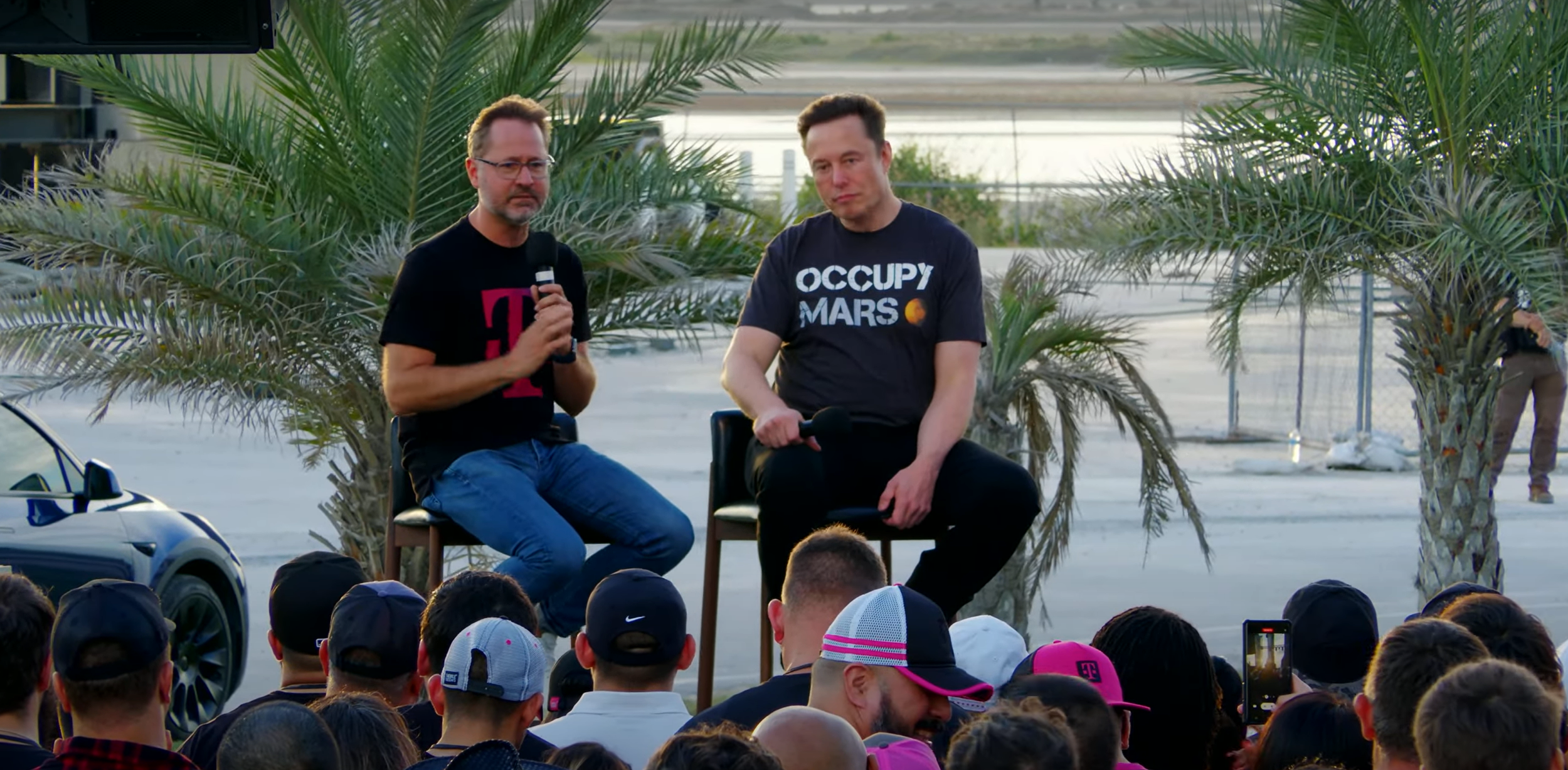SpaceX Invites World's Carriers to Collaborate — No More Cell Phone Dead Zones
SpaceX’s Chief Engineer Elon Musk and T-Mobile’s CEO and President Mike Sievert announced today a breakthrough plan to provide truly universal cellular connectivity.
Despite powerful LTE and 5G terrestrial wireless networks, more than 20% of the United States land area and 90% of the Earth remain uncovered by wireless companies. These dead zones have serious consequences for remote communities and those who travel off the grid for work or leisure. The telecom industry has struggled to cover these areas with traditional cellular technology due to land-use restrictions (e.g. National Parks), terrain limits (e.g. mountains, deserts and other topographical realities) and the globe’s sheer vastness. In those areas, people are either left disconnected or resort to lugging around a satellite phone and paying exorbitant rates.
Leveraging Starlink, SpaceX’s constellation of satellites in low Earth orbit, and T-Mobile’s wireless network, the companies are planning to provide customers text coverage practically everywhere in the continental US, Hawaii, parts of Alaska, Puerto Rico and territorial waters, even outside the signal of T-Mobile’s network. The service will be offered starting with a beta in select areas by the end of next year after SpaceX’s planned satellite launches. Text messaging, including SMS, MMS, and participating messaging apps, will empower customers to stay connected and share experiences nearly everywhere. Afterwards, the companies plan to pursue the addition of voice and data coverage.
In addition, Elon and Mike shared their vision for expanding Coverage Above and Beyond globally, issuing an open invitation to the world’s carriers to collaborate for truly global connectivity. T-Mobile committed to offer reciprocal roaming to those providers working with them to enable this vision.
This service will have a tremendous impact on the safety, peace of mind, and individual and business opportunities around the globe. The applications range from connecting hikers in national parks, rural communities, remote sensors and devices, and people and devices in emergency situations, such as firefighters.
This satellite-to-cellular service will provide nearly complete coverage anywhere a customer can see the sky—meaning you can continue texting and eventually make a cell phone call even when you leave terrestrial coverage. We’ve designed our system so that no modifications are required to the cell phone everyone has in their pocket today, and no new firmware, software updates, or apps are needed. As a complementary technology to terrestrial networks, SpaceX can enable mobile network operators to connect more people, fulfill coverage requirements, and create new business opportunities.
